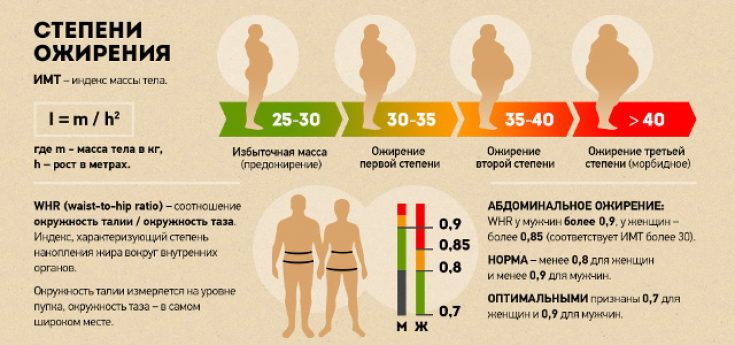Over the past decades, the problem of obesity has become a worldwide concern. At the same time, the question of studying the causes of obesity, the development of effective directions for the prevention and treatment of this condition is still open.
It is now known that various metabolic syndromes, including type 2 diabetes, are associated with the development of obesity, which result from a complex interaction between genetic and environmental factors.
Check out the article on estet-portal.com about the latest research on congenital causes of obesity that are related to immune system dysfunction.
Immune cell activity as one of the causes of obesity
It is known that according to the ability of lymphocytes to recognize specific antigens, they are divided into two categories: acquired immune cells and innate lymphocytic cells (innate lymphoid cells − ILC).
Follow us on Instagram!
It has also been studied in various studies that acquired immune cells are represented by T, B-lymphocytes, natural killer cells − NK cells, and are able to recognize antigens via Rag1/Rag2 dependent receptors, thus stimulating a further immune response. At the same time, ILCs do not express antigen-specific receptors.
What is the danger of obesity for the skin
Instead, ILCs are involved in response to cytokines produced by tissue macrophages, dendritic and epithelial cells. Depending on the profile of the production of certain cytokines and the ways of further development, ILCs are classified into five subgroups. So why is it considered in dietetics that a diet high in fat − one of the biggest causes of obesity?

According to a new study from the RIKEN Center for Integrative Medical Sciences in Japan, the main link between the causes of obesity and immune system dysfunction is the activity of a certain type of immune cell in the gastrointestinal tract. In a series of experimental studies, it was found that in the absence of ILC 2 cells, provided that the diet is enriched with fats, body weight remains stable and there are no signs of obesity.
Is it possible to achieve remission of type 2 diabetes with weight loss
Studying the congenital causes of obesity
Many causes of obesity have been previously known, including predictors such as individual genotype, microbiome, and dietary predisposition. Recent studies have shown that the activity of the immune system can also be a cause of obesity. In particular, it has been proven that one of the causes of obesity may be the function of type 2 ILC cells, which are involved in the regulation of metabolism.
Earlier studies have shown that NK-cells and ILC cells of the 1st group are involved in the formation of cell resistance to insulin, which can cause obesity and the development of type 2 diabetes.
However, the pathophysiological mechanisms of this regulation of metabolism remained poorly understood. In search of an answer to this question, a group of scientists from the RIKEN Center for Integrative Health Sciences conducted a clinical study involving laboratory animals, the genome of which was modulated using genetic engineering techniques.

The aim of the study was to investigate the role of innate lymphocytes in the development of diet-related obesity.
Perspectives of genetic engineering techniques in the elimination of congenital causes of obesity
The following study revealed that animals lacking ILC also did not show other pathophysiological signs of obesity (increased white adipose tissue, increased liver morphology, elevated blood glucose, and developed insulin resistance). After bone marrow transplantation and the introduction of ILC cells into the body of such animals, after 2 months of consumption of food enriched with fats, all signs of obesity were observed.
Interval Training – the gold standard in the management of obese patients

According to the latest results, the researchers concluded that the absence of group 2 ILC cells may serve as a preventive factor in the development of obesity. In general, the researchers emphasized that, despite a high-fat diet, metabolic changes as a cause of obesity due to dietary imbalance can be prevented by eliminating ILC group 2.
From a clinical point of view, this may mean that, in addition to monitoring dietary preferences, some functions of these cells may be a potential target in the treatment of obesity.
How to Boost Your Metabolism: The Secret to a High Metabolism







Add a comment